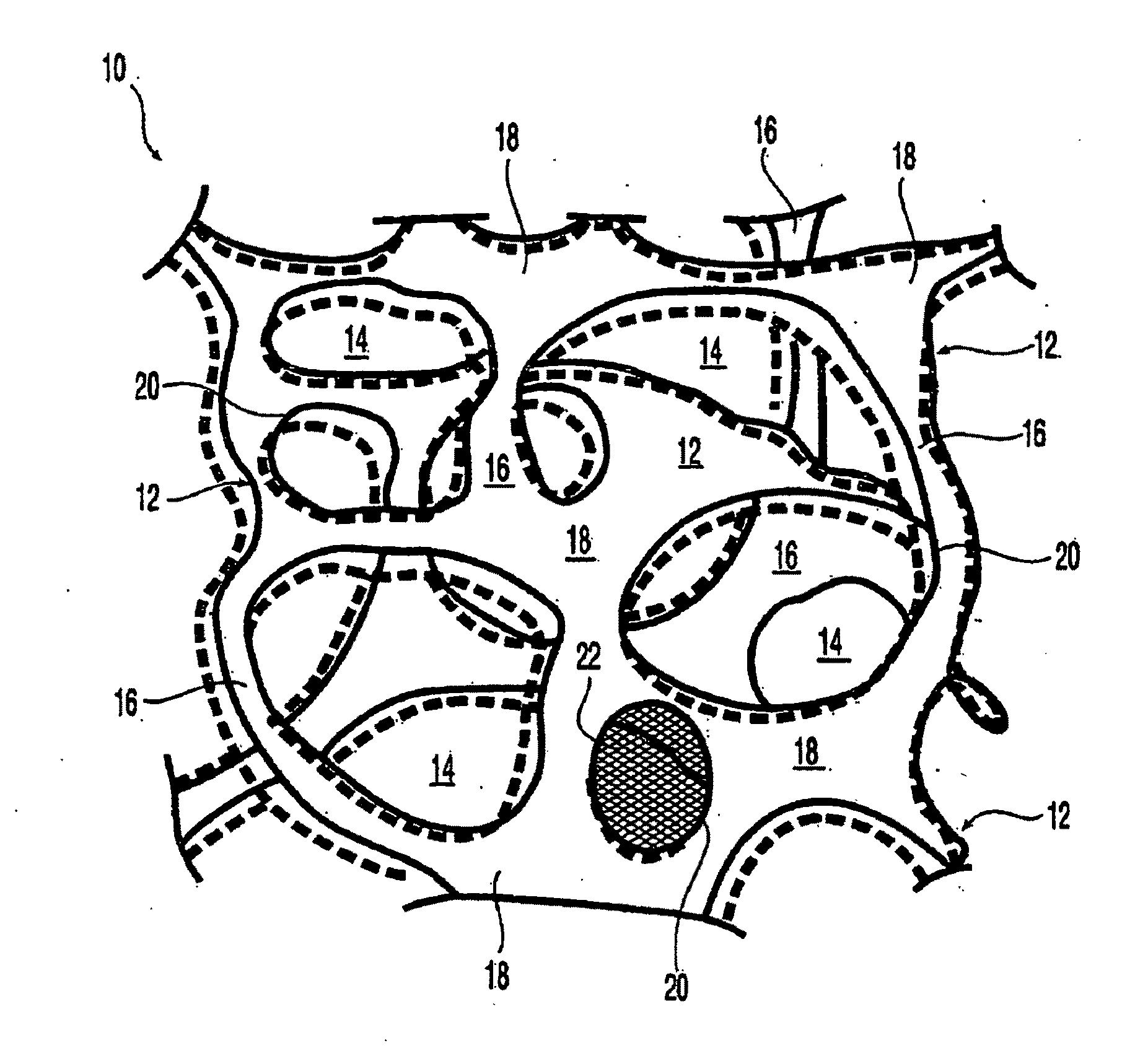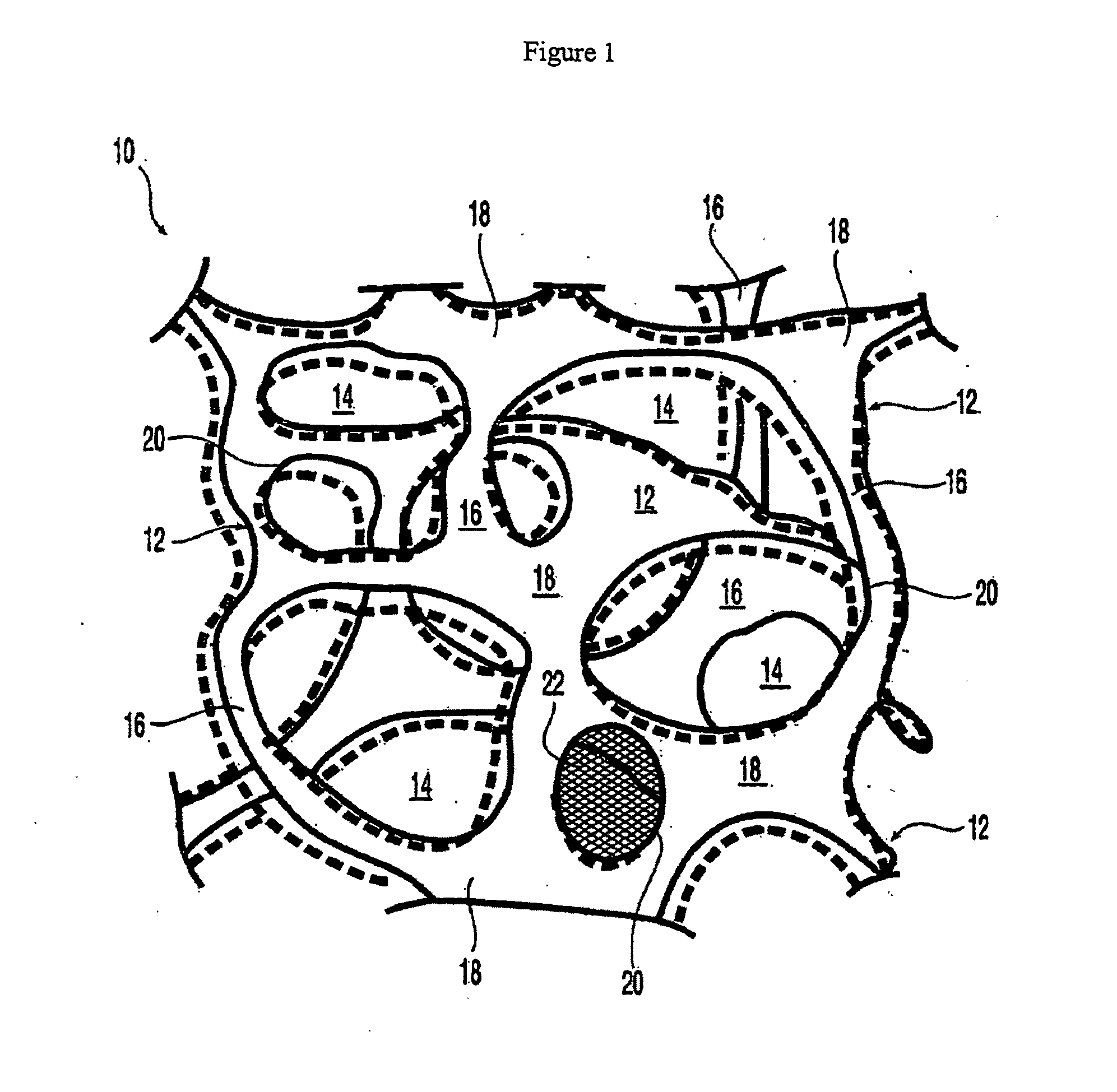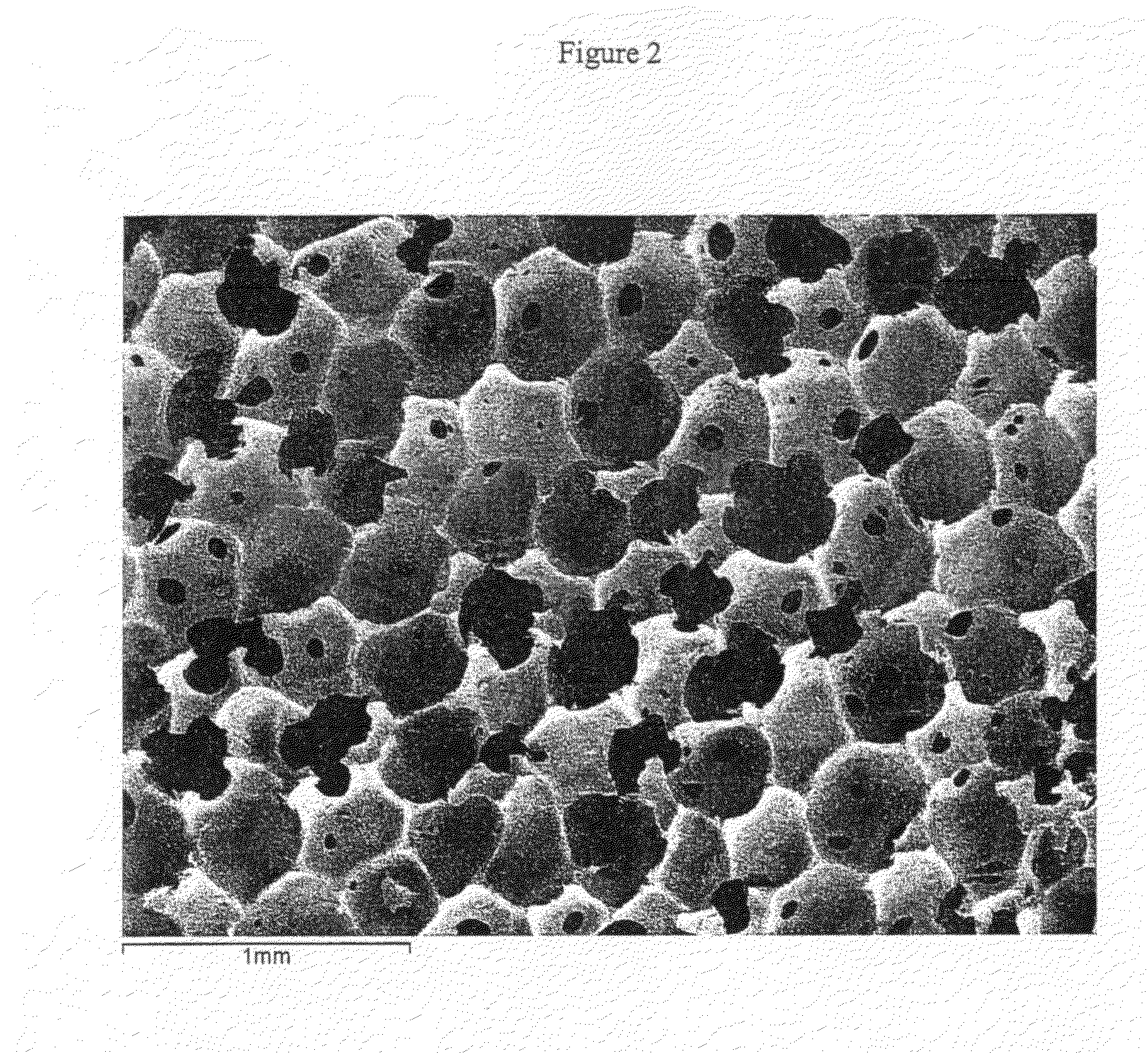At least partially resorbable reticulated elastomeric matrix elements and methods of making same
a technology of reticulated elastomeric matrix and elastomeric matrices, which is applied in the field of reticulated elastomeric matrices, can solve the problems of limiting the ability of effective scaffolding, difficult to engineer controlled pore sizes, and undesirable materials
- Summary
- Abstract
- Description
- Claims
- Application Information
AI Technical Summary
Benefits of technology
Problems solved by technology
Method used
Image
Examples
example 1
Synthesis and Properties of Degradable Reticulated Elastomeric Matrix Containing Polycaprolactone Polyol
[0316]A reticulated partially resorbable elastomeric matrix was made by the following procedure: The aromatic isocyanate MONDUR 1488 (from Bayer Material Science) was used as the isocyanate component. MONDUR 1488 is a liquid at 25° C. MONDUR 1488 contains 4,4′-diphenylmethane diisocyanate (4,4 MDI) and 2,4′-diphenylmethane diisocyanate (2,4 MDI) and has an isocyanate functionality of about 2.2 to 2.3. The ratio of (4,4 MDI) to 2,4-MDI) is approximately 2.5:1. A polycaprolactone diol with a molecular weight of about 2,000 Daltons was used as the polyol component and was a solid at 25° C. Distilled water was used as the blowing agent. The catalysts used were the amines triethylene diamine (33% by weight in dipropylene glycol; DABCO 33LV from Air Products) and bis(2-dimethylaminoethyl)ether (23% by weight in dipropylene glycol; NIAX A-133 from Momentive Performance Chemicals). Silico...
example 2
Synthesis and Properties of Degradable Reticulated Elastomeric Matrix Containing Polycaprolactone Polyol
[0328]A reticulated partially resorbable elastomeric matrix was made by the following procedure: The aromatic isocyanate MONDUR 1488 (from Bayer Material Science) was used as the isocyanate component. MONDUR 1488 is a liquid at 25° C. MONDUR 1488 contains 4,4′-diphenylmethane diisocyanate (MDI) and 2,4′-MDI and has an isocyanate functionality of about 2.2 to 2.3. A polycaprolactone diol, POLY-T220 from Arch Chemicals, with a molecular weight of about 2,000 Daltons, was used as the polyol component and was a solid at 25° C. Distilled water was used as the blowing agent. The catalysts used were the amines triethylene diamine (33% by weight in dipropylene glycol; DABCO 33LV from Air Products) and bis(2-dimethylaminoethyl)ether (23% by weight in dipropylene glycol; NIAX A-133 from Momentive Performance Chemicals). Silicone-based surfactants TEGOSTAB BF 2370, TEGOSTAB B5055, AND TEGOST...
example 3
Synthesis and Properties of Degradable Reticulated Elastomeric Matrix Containing Polycaprolactone / Polyglycolide Copolymer Polyol
[0338]A reticulated partially resorbable elastomeric matrix was made by the following procedure: The aromatic isocyanate MONDUR 1488 (from Bayer Material Science) was used as the isocyanate component. MONDUR 1488 is a liquid at 25° C. MONDUR 1488 contains 4,4′-diphenylmethane diisocyanate (MDI) and 2,4′-MDI and has an isocyanate functionality of about 2.2 to 2.3. A polycaprolactone / PGA copolymer diol with a molecular weight of about 3,000 Daltons, composed of a mole ratio of PCL:PGA of 70:30, was used as the polyol component and was a viscous liquid at 25° C. Distilled water was used as the blowing agent. The catalysts used were the amines triethylene diamine (33% by weight in dipropylene glycol; DABCO 33LV from Air Products) and bis(2-dimethylaminoethyl)ether (23% by weight in dipropylene glycol; NIAX A-133 from Momentive Performance Chemicals). Silicone-b...
PUM
| Property | Measurement | Unit |
|---|---|---|
| Fraction | aaaaa | aaaaa |
| Fraction | aaaaa | aaaaa |
| Viscosity | aaaaa | aaaaa |
Abstract
Description
Claims
Application Information
 Login to View More
Login to View More - R&D
- Intellectual Property
- Life Sciences
- Materials
- Tech Scout
- Unparalleled Data Quality
- Higher Quality Content
- 60% Fewer Hallucinations
Browse by: Latest US Patents, China's latest patents, Technical Efficacy Thesaurus, Application Domain, Technology Topic, Popular Technical Reports.
© 2025 PatSnap. All rights reserved.Legal|Privacy policy|Modern Slavery Act Transparency Statement|Sitemap|About US| Contact US: help@patsnap.com



